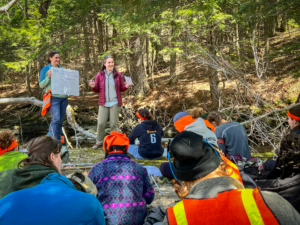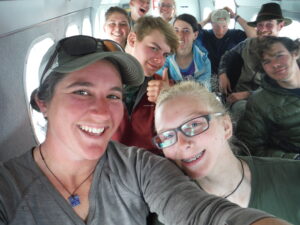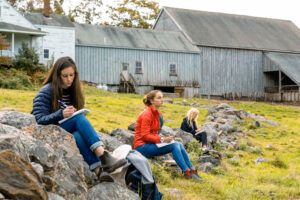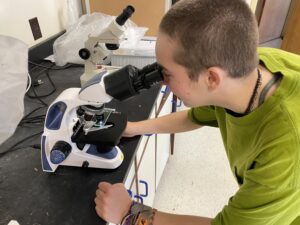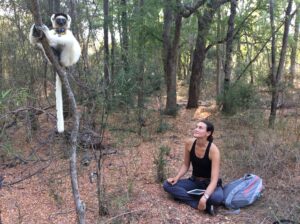Warm days and cold nights have triggered the sap flow in the maple trees on Chewonki Neck and semester students are setting taps and hanging buckets to collect this magical, sticky stuff.
Then we boil it down to produce what James Kary, our science teacher and sugar-master, describes with tongue-in-cheek as “small-batch, artisanal maple syrup.”
The students from Esther Kary’s French class concocted a Sugar Shack Brunch in the Québécois tradition last weekend, cooking crêpes that served as the perfect stage for the fresh syrup and making loopy maple taffy on the snow.
As any Semester 58 student can tell you, though, every amber drop makes your trouble worthwhile.
The Science of Maple Syrup:
On Thursday, James Kary lead his natural history class outside to explore Chewonki’s sugar bush via snowshoe and learn more about the maple sugaring process. The students learned how to identify maples, assess the trees’ health, and collect sap without damaging the tree.
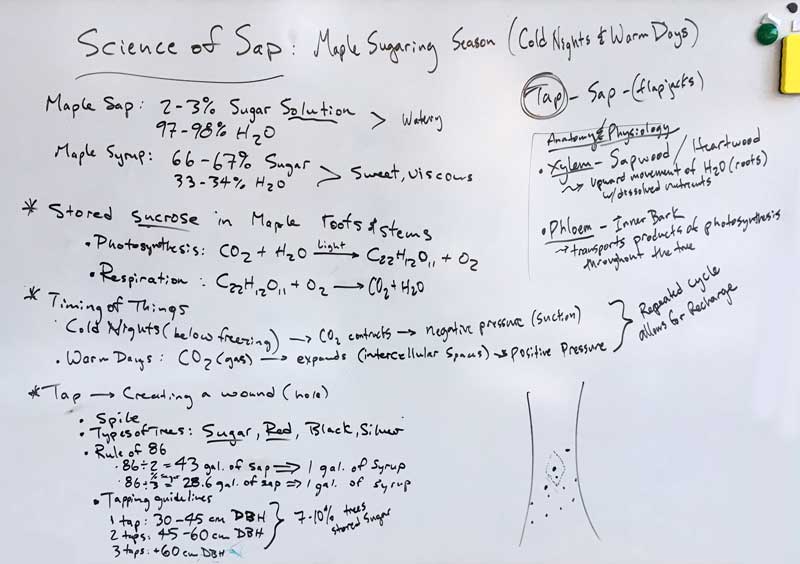
Following a hand-drawn map created by past semesters, students took turns drilling into maples, hammering in taps and setting up collection pails.
Sap could be heard drip- drip -dripping all around by the time class finished up. Many students sampled the sweet and slightly tangy raw sap before heading back to their cabins.
Our students, faculty and staff will all take turns collecting the sap over the next few weeks, which will be boiled in Chewonki’s sugar shack and used in the kitchen.
There are now taps in 30-40 trees. A third of those are sugar maples while the majority are red maples. Both types of tree produce sap good for making syrup, says James, although sugar maples are held in highest esteem for flavor.
Maine Coast Semester and Chewonki Elementary School students are monitoring the buckets; when they’re full, students add the sap to a tank in the bottom of the Wallace Center, where it is boiled till it becomes syrup.
Sap needs to boil for many hours and the sap-to-syrup ratio is punishing: it takes roughly 40 gallons of sap to yield about 1 gallon of syrup.
